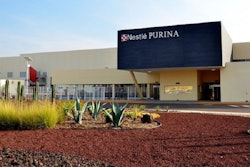
A pundit once famously said that you should never let a crisis go to waste, because it creates an opportunity to do things you thought you couldn’t do before.
Or, as Petfood Forum CONNECT 2020 keynote speaker Bonin Bough said about this year: “Uniquely, we were broken without us having to break ourselves, and now we have to ask ourselves, how do we reinvent ourselves anew?”
His presentation was on “hackonomy,” or how to create value by breaking things – and thanks to COVID-19, the breaking was done for us. “I never thought that we’d face what we’re facing today: a pandemic that not just impacted our businesses but literally broke the way we engage with consumers, broke the way we actually transact and ultimately, is transforming the way we can potentially grow,” added Bough, a consumer goods and marketing expert.
This concept seems to have become pervasive this year, during crises that perhaps outstrip all others, and much of the focus has been on taking the experience, outcomes and lessons learned from 2020 to better innovate. This includes from two experts recently presenting at other virtual events, whose tips seem to apply well to pet food development and businesses.
Innovating means accepting failure, too
Steven Lerch, founder and president of Story Arc Consulting, is a former executive with Google and shared his experiences and insights from that time – along with other examples – during Virtual Poultry Tech Summit on October 21, 2020. His definition of innovation: “To me, it’s simply one of two things: It’s how we as humans make choices to change the world around us, or it’s how we as humans react to the world changing around us.”
As for how to innovate, Lerch offered three tips:
1. Innovation comes from anywhere. His examples included an assistant at Google during the company’s early days who came up with the idea – and was allowed to develop and execute it – to create a bus program for “Googlers” to commute together to and from work in California’s infamously awful traffic. The program, which has continued to grow (at least pre-COVID-19), freed up employees from driving so they could work, catch up with friends or family, or just sleep.
Lerch posed a series of questions related to the example: Would any employee in your company know what to do with a crazy idea? Would they feel empowered and supported? Would they know how to proceed, who to go to for questions, how to do a draft budget, etc.? If the answer to those or similar questions is no, how many great ideas might you be missing out on?
2. Launch, learn, improve. Calling this the most valuable philosophy driving innovation, Lerch stressed that whatever new thing you’re trying (product, methodology, process, etc.), always consider it version one and know that you’ll have to keep improving and changing it. Specifically, getting feedback from others, even just within your organization, is key. “Don't keep your idea kicking around in your head for months; come out with something for people to give feedback on,” Lerch said.
He gave another Google example: Google Glasses, for which the first prototype took only 45 minutes to build. Though it was very big, bulky and had tons of wires running in and out, at least the innovators had something for people to touch, feel, see and give feedback on. And though Google Glasses eventually failed after being refined and launched on the market, Google found other uses for augmented reality and what they learned from working with it for the glasses. In other words, Lerch said, innovating means accepting failure and learning from it.
3. Meaningful mission. “One of the most powerful tools a leader has to motivate their team to innovate is to tie their everyday tasks to the organization’s mission,” Lerch said. In this presentation to members of the poultry industry, he pointed out that this should be easy for organizations in the industry because their mission, basically, is to feed the world.
That easily translates to the pet food industry, I think: Our mission is to feed the beloved companion animals of the world.
Sustainability is all about innovation
In a webinar hosted by the Pet Sustainability Coalition, Tim Schuster, founder and CEO of Popup Think Tank, a strategy and innovation consulting firm, presented information and tips on sustainable innovation. To introduce the topic, he explained that to him, sustainability – or striving to be sustainable – is all about innovation. As he quoted from a Harvard Business Review article: “Sustainability is a motherlode of innovation.”
Further, Schuster said, delivering value (with a product, for example) and capturing value in return (as with a profit) without regard to environmental and sustainable impact is not innovation; it’s exploitation. “Soon, ‘sustainable innovation’ will be considered redundant,” he commented.
Acknowledging that innovation is hard work, Schuster provided his own tips for how to start:
4. Start with constraints. “Creativity loves constraints,” he said. Those can be the situation or context you’re in, a specific need to be met or limited resources. “Our minds love a context,” Schuster added, which, not coincidentally, sustainability provides. “Innovation rarely originates from a state of comfort, safety or predictability; it’s usually driven by necessity, our backs up against the wall.” (If 2020 doesn’t represent “our backs up against the wall,” I don’t know what does!)
Innovation also often emerges from the bottom up, because those on the ‘frontlines” or working directly with customers have the best and most immediate insights – an intuitive sense of what the needs and pain points are.
5. Innovation is not up to us. It’s not even a helpful word, Schuster said, because it often leads to someone just doing something new without value. The innovation arises when the product/service/whatever is used by the consumer; true innovation is really about value. And sometimes that value completely defies logic. As examples, Schuster mentioned Red Bull, Wikipedia, Starbucks, Dyson vacuums, McDonald’s, even blue jeans. At the time, their “pitches” made no sense and were likely laughed at, but in hindsight they really worked because they provided value to consumers. “In hindsight, the illogical often looks logical,” he said.
As part of this tip, Schuster commented that “innovation is a team sport.” Creating welcome and inclusive workplace cultures is vital to sustainable innovation – matching up with Lerch’s first tip about innovation coming from anywhere.
A model: innovation through interviewing
Schuster’s final tip was a variation on Lerch’s second, with Schuster wording it as “embrace a tinker-and-test mentality.” The only way to know if something will add value – even (maybe especially) if it seems illogical – is to create it, test it, improve it. He pushed interviews as an indispensable tool to get at insights. “Interviewing shows us how to love their problem more than our own solution,” Schuster said, because the process leads to better solutions.
He provided a model: Ask who the product or solution is for and how it adds value (i.e., build a hypothesis). Test it by building a prototype, then get feedback, using these interview questions:
- What do you like about the prototype?
- What do you wish was different, or what do you wish for that isn’t there?
- What if it did ________? (Ask them to fill in the blank.)
Finally, crucially, listen to what’s not being said in the interviews, Schuster concluded.
View our continuing coverage of the coronavirus/COVID-19 pandemic.


















